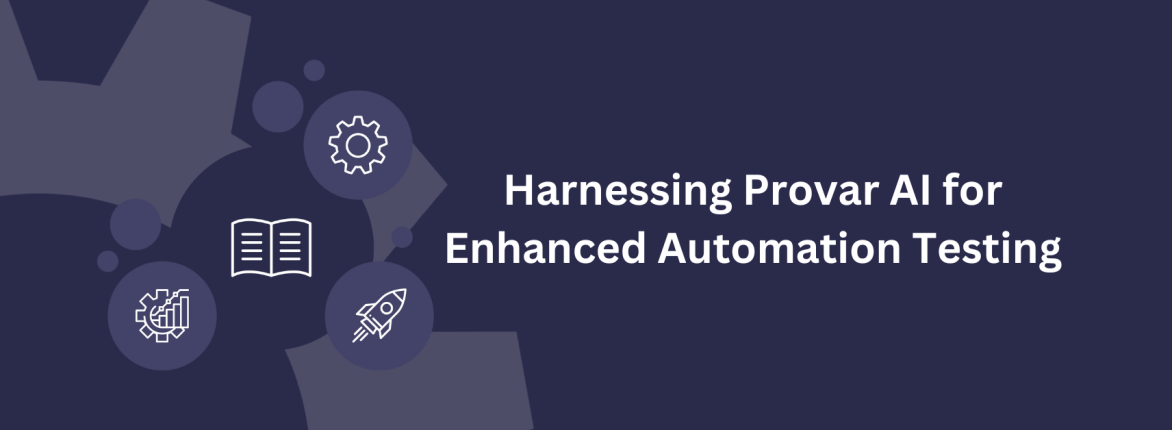If you’re a part of a larger enterprise, maintaining a high standard of software quality while keeping up with rapid development and innovation can be daunting. Building out the right testing strategy for these complex businesses requires proper planning and adaptive tools, and test automation can offer numerous benefits such as faster feedback, improved test coverage, and reduced manual effort.
However, managing test automation at scale presents its own set of challenges — challenges that not every test automation solution is fully equipped to handle. In this blog post, we’ll delve into effective strategies for managing test automation in large enterprises so you can ensure your automation efforts yield the maximum return on your investment.
Top Tips for Managing Test Automation for Your Large Enterprise
Let’s talk tips for managing test automation for larger enterprises, which poses a specific set of hurdles. By navigating these best practices, you’ll be well on your way to testing with ease and success.
1. Define a Clear Automation Strategy
A well-defined automation strategy is the foundation for successful test automation. Begin by identifying the key objectives of your automation efforts. Are you aiming to reduce regression testing time, improve test coverage, or enhance the reliability of your software? Clear objectives will help guide your efforts and ensure alignment with business goals.
Here are some components of an effective strategy:
- Scope of Automation: Determine which tests to automate. Focus on repetitive, time-consuming, and high-risk areas where automation will provide the greatest benefit.
- Tool Selection: Choose tools that align with your technology stack and business needs. Consider factors such as ease of use, integration capabilities, and support.
- Resource Allocation: Assign dedicated resources for developing and maintaining test automation. Ensure team members have the necessary skills and training.
- Metrics and KPIs: Establish metrics to measure the success of your automation efforts. Common metrics include test coverage, execution time, defect detection rate, and return on investment (ROI).
2. Foster Collaboration Across Teams
Effective collaboration between development, QA, and operations teams is crucial for the success of test automation. Adopting practices like DevOps and Continuous Integration/Continuous Deployment (CI/CD) fosters a culture of collaboration and shared responsibility for quality.
Here are some tips for enhancing collaboration:
- Integrated Tools: Use tools that facilitate seamless integration and communication between teams. CI/CD tools, and test automation tools that can properly test these workflows, can help automate the build and deployment process, ensuring that tests are run consistently.
- Regular Meetings: Hold regular cross-functional meetings to discuss automation progress, challenges, and improvements. This promotes transparency and collective problem-solving.
- Shared Knowledge Base: Create and maintain a centralized knowledge base with documentation, best practices, and troubleshooting guides to ensure everyone is on the same page.
3. Invest in the Right Testing Infrastructure
A robust testing infrastructure is essential for running automated tests efficiently and reliably. This includes having a scalable environment, adequate hardware, and proper test data management.
Here are the key elements of testing infrastructure:
- Scalability: Ensure that your test infrastructure can scale to handle the increased load during peak testing times. Look for a test automation tool that will grow with you as you do.
- Environment Parity: Maintain consistency between your test and production environments to reduce the risk of environment-specific issues.
- Test Data Management: Develop a strategy for managing test data, ensuring it is up-to-date, relevant, and secure.
4. Implement Continuous Testing
Continuous testing involves the automated execution of tests throughout the software development lifecycle, providing immediate feedback on the quality of the code. This practice helps identify defects early, reducing the cost and effort required to fix them.
Here are some best practices for continuous testing:
- Shift-Left Testing: Integrate testing early in the development process to catch issues sooner. This can be achieved by incorporating unit tests, integration tests, and code reviews in the early stages of development.
- Automated Regression Testing: Regularly run automated regression tests to ensure that new changes do not break existing functionality.
- Feedback Loops: Establish quick feedback loops so that developers can receive and act on test results promptly. This can be facilitated through CI/CD pipelines and real-time notifications.
5. Maintain and Evolve Test Suites
Test automation is not a one-time effort, but rather an ongoing process. Regular maintenance and evolution of test suites are necessary to keep them relevant and effective.
Here are some strategies for maintenance:
- Regular Reviews: Periodically review and update test cases to ensure they are aligned with current requirements and functionalities.
- Refactoring: Refactor test scripts to improve readability, maintainability, and performance.
- Eliminate Redundancies: Identify and eliminate redundant or obsolete test cases to keep the test suite lean and efficient.
How Provar Automation Can Help You
Provar Automation is designed to address the unique challenges faced by enterprise-level businesses, providing a comprehensive solution to elevate your test automation strategy.
Here are the key benefits of this comprehensive test automation solution, within Salesforce and beyond:
- End-to-End Test Automation: Provar Automation enables end-to-end testing of complex business processes across multiple systems and platforms, ensuring comprehensive coverage.
- Codeless Test Creation: Provar Automation’s intuitive interface allows for codeless test creation, enabling both technical and non-technical team members to contribute to automation efforts. This reduces the learning curve and accelerates test development.
- Salesforce Integration: Provar is deeply integrated with Salesforce and has been since 2014, providing tailored solutions for Salesforce testing. This ensures that Salesforce updates and customizations are thoroughly tested, maintaining system reliability.
- Robust Test Management: Provar Automation offers powerful test management capabilities, allowing teams to organize, schedule, and monitor test execution efficiently. This improves visibility and control over the testing process. Pro tip: Pair with Provar Manager for even more test management capabilities!
- Scalability and Performance: Provar Automation’s architecture is built to scale, accommodating the needs of large enterprises with extensive testing requirements. It ensures reliable performance even under heavy load conditions.
By leveraging Provar Automation, enterprise-level businesses can streamline their test automation processes, improve collaboration across teams, and ensure high-quality software delivery. So don’t wait … connect with a member of the Provar team to learn more!
Want to learn more about how Provar can help you elevate your test automation strategy for your large enterprise? Connect with an expert today!










